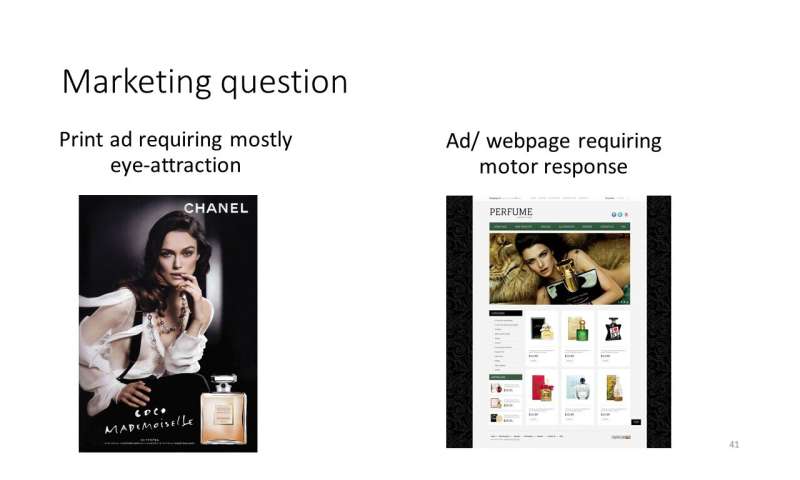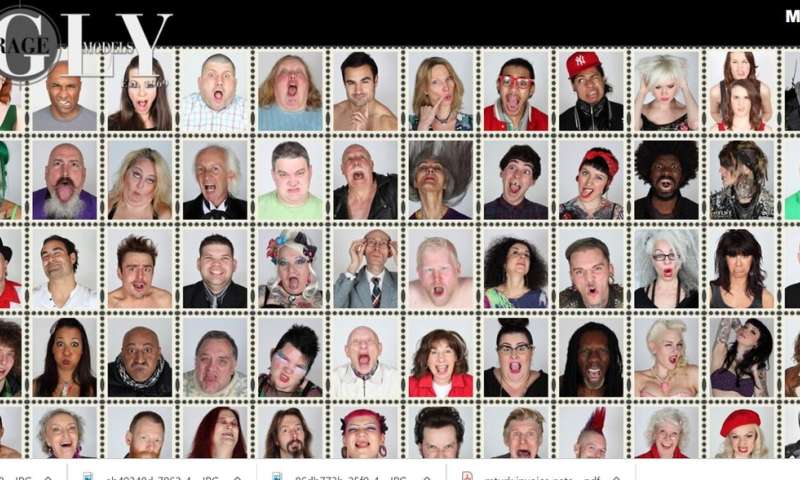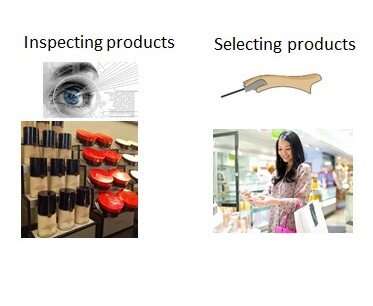Beauty is in the hand and not the eyes of the beholder

In our daily lives, we engage in various activities involving different body movements. We inspect products and advertisements with our eyes, but test products or browse through websites with our hands. Consider two types of ads, both featuring a model: One is a print ad that mostly aims to capture the visual attention of the consumer without further involvement; the other is a banner ad that encourages the consumer to move her hand to click on it. Alternatively, imagine a shelf where the consumer looks at a product versus when she needs to reach for the product. Does the difference between looking and reaching mean that the decision processes are also different? According to new research recently published in the Journal of Experimental Social Psychology, the answer is yes.
Researchers at the Nova School of Business and Economics (Portugal), the University of Pennsylvania (U.S.) and Nanyang Technological University (Singapore) examined how people move their eyes and hands specifically in response to beauty. They demonstrated that the hand and the eye respond to facial attractiveness, but in different ways. They tracked eye and hand movements while participants were engaged in a very simple numerical task (similar to what consumers would do when comparing prices) in the presence of faces of varying degrees of attractiveness. Their results showed that people's hand movements are driven by the attraction to beautiful faces, but are much less affected by "average" or unattractive faces. "Being moved" by beauty is thus not simply a metaphor; rather, beauty automatically engages hand movement. The eyes, on the other hand, tend to fixate on faces on the extreme ends of the attractiveness spectrum; that is, either attractive or unattractive faces rather than moderate/average faces.

Advertisers should carefully consider consumers' body parts involved
In advertising, the use of attractive models' faces is prevalent, well beyond the marketing of beauty products. At the same time, brands also feature less-attractive and "ugly" models. In fact, Ugly Models, a London-based modeling agency that promotes extraordinary features, including large chins, flapping ears and crooked noses, has been in operation for a half-century. The agency has been promoting its models to brands including Burberry, Mercedes and Jack Daniel's, and has made eye-catching additions to fashion showcases and catwalks.
According to the present study, from the consumer's perspective, the effectiveness of these approaches might be contingent on whether the media platform of such advertisements activates consumers' eye or hand movements. In media whose aim is simply to alert viewers to the message, the extremeness of a model's features—how "distinctive" a face is, whether unattractive or attractive—may be more important. In this case, either attractive or unattractive models would capture the attention of viewers. In media that require hand movements such as pay-per-click advertisements or online selling platforms, models with attractive faces might be more effective.
In the study, faces of moderate attractiveness did not seem to influence either eye movement or hand movement. Recently, companies have started to feature "average" models in order to appear more inclusive and authentic—examples include Aerie, Dove and others. While the merit of this approach might be appreciated by consumers, it may not be effective in grasping attention to begin with.

Expanding to product aesthetics
This phenomenon might extend to other products, such that different mechanisms might be engaged when the consumer inspects a product on display (i.e., only the visual system is engaged) compared to when the consumer tests and selects the product (i.e., the hand is also engaged).
In product design, aesthetics can be critical to consumer acceptance and the product's overall market success. Additionally, products with bizarre and unusual designs lacking beauty can also attract attention. Both strategies might work equally well in getting the consumer's attention to a product on display; however, a beautifully designed product will have the advantage when the consumer is expected to reach to use the sample.
Natalie Truong Faust led the study and is assistant professor of marketing at Nova School of Business and Economics (Portugal). Anjan Chatterjee is professor of neurology, psychology, and architecture at the University of Pennsylvania (U.S.). Georgios Christopoulos is associate professor of decision neuroscience at Nanyang Business School, NTU (Singapore).
More information:
Natalie T. Faust et al. Beauty in the eyes and the hand of the beholder: Eye and hand movements' differential responses to facial attractiveness, Journal of Experimental Social Psychology (2019). DOI: 10.1016/j.jesp.2019.103884
This story is part of Science X Dialog, where researchers can report findings from their published research articles. Visit this page for information about ScienceX Dialog and how to participate.